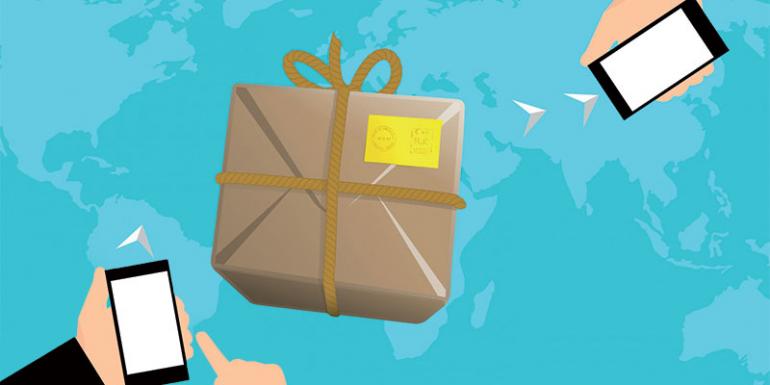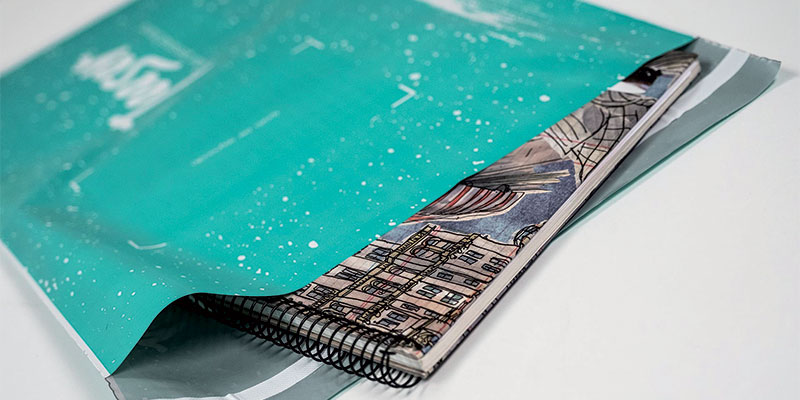Packaging & e-commerce – Data 2019

An analysis of the development of the market, of the methods and of the physical goods purchased on the online platforms linked to forms of packaging.
Barbara Iascone
Italian Packaging Institute
When we talk about e-commerce we refer basically to a type of purchase and distribution.
This analysis includes the purchase and sale of products and services through the IT channel, the so-called “online purchases”.
Based on the nature of the subjects involved, it is then possible to distinguish two types of e-commerce: Business to Business (B2b), when the relationship is between two companies (a supplier and a buyer), and Business to Consumer (B2c) when the relationship is between a supplier company and a final consumer.
The data shown in this report refer only to the sale and purchase of goods that require packaging; we will therefore exclude everything that refers to services, insurance, travel, etc.
The big picture
According to Netcom (the Italian Digital Commerce Consortium) estimates, approximately 20 million monthly deliveries in our country derive from e-commerce, with a consequent significant flow of packaging.
Even more significant are the numbers in light of what is happening due to the particular emergency situation created by Covid-19.
According to Nielsen’s first analyses, the governmental measures imposed to stem the spread of Coronavirus are profoundly changing the way we purchase. Specifically, already in the first weeks of quarantine, online purchases of consumer goods (from packaged to fresh or frozen food, from drinks to household and personal care items) increased by 81%.
Beyond the current anomalous situation, the e-commerce area has already featured double-digit annual growth rates for a couple of years, ranging between 20% and 10%.
In more mature markets (USA, China etc ...), e-commerce now represents a channel of primary importance for the purchase of goods, reaching 20% of global purchases. In countries where this type of purchase is developing more slowly, as in Italy, although it only involves a small part (7%) of total purchases, growth rates are much higher than in the rest of the world.
| Representation | Growth on previous year | |
|---|---|---|
| IT & electronics | 29.30% | 19% |
| Clothing | 18.20% | 16% |
| Furnishing & Lliving | 9.40% | 30% |
| Food & Grocery | 8.80% | 42% |
| Publishing | 5.60% | 8% |
| Other goods | 28.70% | 21% |
The market and its dimensions
Based on the analysis carried out by the Milan polytechnic in the publication “B2c e-commerce observatory”, in 2019 there were 318 million shipments in Italy relating to the B2c e-commerce of goods, resulting in a consequent number of parcels and packages that have crossed Italy with an increase of over 21% compared to 2018 (when a +16% had already been registered).
In 2019, the e-commerce related to the sale of Italian goods to Italian and foreign goods consumers only registered a turnover of €18.9 billion. The market is divided between different types of goods marketed, representing different portions of the total turnover.
Information technology and electronics are confirmed as the most dynamic department and represent 29.3% of the entire turnover of the sector, with a growth rate of +19% compared to 2018.
The clothing sector follows (18.2% of the total), which is constantly growing, in 2019 having reached +16%. Among the sectors that record the most significant growth rates, even if they move significantly lower volumes, we have Furniture & Home living with +30% compared to 2018 and Food & Grocery with + 42%: the two sectors respectively account for 9.4% and 8.8% of the total.
Publishing grew by 8% (5.6% of the total turnover of the sale and purchase of goods online) while “Other goods” listing grew by 21%. This last category includes products for personal care, home, toys, stationery, etc., all together representing 28.7% of the total.
As with any sector, foreign trade also exists for e-commerce. In 2019, exports of goods, understood as sales from Italian sites to foreign buyers, registered a value of 3 billion euros with a growth rate of +13% compared to 2018. The most representative sector in this area is clothing, followed by furniture.
As regards imports, the value relating to the purchase of goods by Italians from foreign sites is approximately 2.2 billion euros.
| % | 2018 | 2019 | |
|---|---|---|---|
| Corrugated cardboard packaging | 92% | 240,000 | 293,000 |
| Plastic bags | 8% | 0.565 | 0.69 |
The packaging
But what happens from the packaging point of view?
As far as primary packaging is concerned, nothing changes since, at the moment, the packaging in contact with the product remains the same, whether it is purchased in the store or purchased online.
What changes is the transport packaging, necessary for delivery.
In fact, if the goods purchased in the store are brought home in a biodegradable paper or plastic bag, when the goods are purchased online, they mainly reach their destination in a corrugated cardboard box or pouch, or in a plastic bag.
When the packaging is a cardboard box, it usually also has protective packaging inside, which assumes a fundamental importance to avoid damage and, ultimately, the return of the goods.
And if, until some time ago, the protective packaging was mainly represented by plastic bubble wrap films, plastic pouches, or expanded polystyrene chips, today it is almost always paper (sheets of wrapping paper, or corrugated cardboard production scraps), featuring the least possible waste of resources.
According to the Italian Packaging Institute database relating to the packaging sector in this area, 92% of orders are shipped in corrugated cardboard packaging: these are mainly boxes, but we also find rigid cardboard pouches used to send small packages, for example stationery or books.
In 2019, 293,000 tons of corrugated cardboard were used for boxes used to handle goods marketed via e-commerce, about 6% of the total corrugated cardboard produced in Italy. Indeed the recent uptrend (+2% per year from 2014 to 2019) was precisely driven by e-commerce.
The remaining 8% of the packaging used for online sales is attributable to low density polyethylene plastic bags.

Collection and recycling
Obviously, the constant development of e-commerce not only affects the production of packaging necessary to handle the goods sold online, but also has repercussions downstream of the supply chain, in the management of their end of life, especially as regards corrugated cardboard.
According to Comieco (Consortium that deals with the recovery and recycling of paper and cardboard packaging) data, the growth trend of e-commerce in Italy is also evident from the increase associated with the increased imanagement of paper waste: + 500 thousand tons compared to 2014.
Comieco has activated a series of procedures along the entire supply chain to better manage this situation, both by equipping itself further on the collection front and at the industrial level in the treatment of waste paper and, therefore, in the production of new packaging with material derived from recycling (proof of this is the opening of new paper mills especially equipped for this type of production).
Furthermore, together with Netcom, Comieco has created a unique document entitled “Guidelines to be followed for the correct use of packaging in e-commerce”.
The aim of the project is to stimulate companies operating in the e-commerce sector and companies in the logistics chain, providing them with practical tools to better manage the environmental impact of packaging: eight key points are highlighted, which represent as many behaviors to be adopted to demonstrate one’s commitment to sustainability.
The document also contains a checklist, which allows companies to evaluate the correct application of the guidelines.
Even in e-commerce, packaging has a strategic communicative role towards those who consider all aspects of environmental sustainability important. According to a Netcom research, for 80% of Italian buyers on the web, in fact, an eco-sustainable packaging conveys the company’s attention to the environment.
But what are the main strengths of sustainable packaging? Being reusable, recyclable and renewable.
If we think that every “click” corresponds to a package to be disposed of, we realize the enormous amount of paper and cardboard to be managed and then exploited and valorised at the end of life in a circular economy perspective, through separate collection and recycling The paper supply chain is therefore being organized to face the challenges posed by the online shopping revolution: just think that in the analysis of the commodity sectors the item “e-commerce” has been introduced, a sector that offers interesting opportunities also to the Italian corrugated cardboard sector, with a market share that in 2018 stood at 2.2% (source Gifco, the Italian Corrugated Cardboard Manufacturers Group).
From food to cosmetics, some companies - including Fratelli Carli SpA, L’Erbolario, LoveThEsign, Profumerie Sabbioni, Westwing… - enthusiastically joined the initiative and told their experience in terms of attention to sustainable packaging. The challenge for everyone is to identify the strengths on the one hand and the critical points on the other, in order to achieve ever better environmental performance.

Evolutionary hypotheses
The growth prospects for the e-commerce area are very high, even in Italy and despite our “delays”.
The hypotheses speak of an average annual growth rate, for the next two years, close to +15%, which will positively influence all the types of packaging involved. It cannot be excluded that, in the future, specific packaging solutions for e-commerce can be designed, which bear different information to the packs used for the same goods but sold in the traditional way. In this sense, technology will come to our aid with advanced packaging systems, “intelligent packaging” capable of monitoring and “reporting” information on the shelf-life of a product, on traceability or more.


















